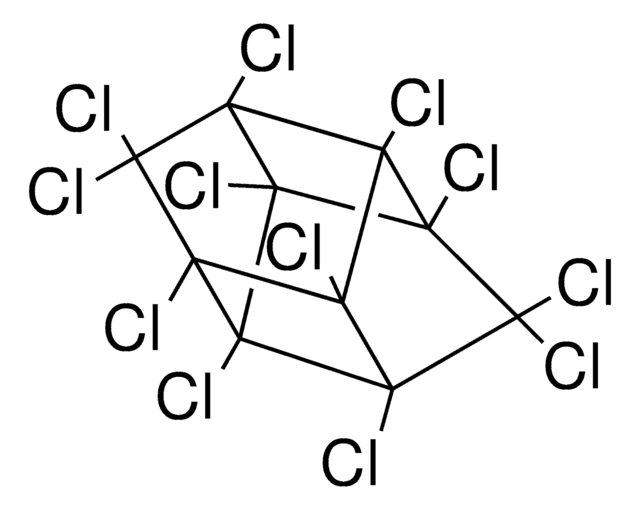48103
Camphechlor solution
certified reference material, 1000 μg/mL in isooctane
Sinónimos:
Camphechlor solution
About This Item
Productos recomendados
grado
certified reference material
TraceCERT®
Agency
EPA 8081
Línea del producto
TraceCERT®
CofA
current certificate can be downloaded
Características
standard type calibration
envase
ampule of 1 mL
concentración
1000 μg/mL in isooctane
técnicas
HPLC: suitable
gas chromatography (GC): suitable
aplicaciones
agriculture
cleaning products
cosmetics
environmental
food and beverages
personal care
formato
single component solution
temp. de almacenamiento
2-30°C
InChI
1S/C10H8Cl8/c1-4-7(2-11,3-12)9(16)6(14)5(13)8(4,15)10(9,17)18/h5-6H,1-3H2
Clave InChI
OEJNXTAZZBRGDN-UHFFFAOYSA-N
¿Está buscando productos similares? Visita Guía de comparación de productos
Aplicación
Otras notas
Información legal
Palabra de señalización
Danger
Frases de peligro
Consejos de prudencia
Clasificaciones de peligro
Aquatic Acute 1 - Aquatic Chronic 1 - Asp. Tox. 1 - Flam. Liq. 2 - Skin Irrit. 2 - STOT SE 3
Órganos de actuación
Central nervous system
Código de clase de almacenamiento
3 - Flammable liquids
Clase de riesgo para el agua (WGK)
WGK 3
Punto de inflamabilidad (°F)
10.4 °F - closed cup
Punto de inflamabilidad (°C)
-12 °C - closed cup
Elija entre una de las versiones más recientes:
¿Ya tiene este producto?
Encuentre la documentación para los productos que ha comprado recientemente en la Biblioteca de documentos.
Nuestro equipo de científicos tiene experiencia en todas las áreas de investigación: Ciencias de la vida, Ciencia de los materiales, Síntesis química, Cromatografía, Analítica y muchas otras.
Póngase en contacto con el Servicio técnico











